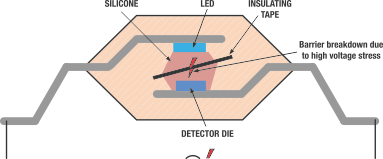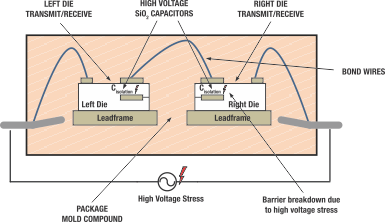SLLA526C October 2020 – September 2023 ISO6720-Q1 , ISO6721 , ISO6721-Q1 , ISO6731 , ISO6740 , ISO6741 , ISO6741-Q1 , ISO6742 , ISO7021 , ISO7041 , ISO7131CC , ISO7140CC , ISO7140FCC , ISO7141CC , ISO7141FCC , ISO7142CC , ISO7142CC-Q1 , ISO721 , ISO721-Q1 , ISO721M , ISO721M-EP , ISO722 , ISO722-Q1 , ISO7220A , ISO7220A-Q1 , ISO7220B , ISO7220C , ISO7220M , ISO7221A , ISO7221A-Q1 , ISO7221B , ISO7221C , ISO7221C-HT , ISO7221C-Q1 , ISO7221M , ISO722M , ISO7230C , ISO7230M , ISO7231C , ISO7231C-Q1 , ISO7231M , ISO7240C , ISO7240CF , ISO7240CF-Q1 , ISO7240M , ISO7241A-EP , ISO7241C , ISO7241C-Q1 , ISO7241M , ISO7242C , ISO7242C-Q1 , ISO7242M , ISO7310-Q1 , ISO7310C , ISO7310FC , ISO7320-Q1 , ISO7320C , ISO7320FC , ISO7321-Q1 , ISO7321C , ISO7321FC , ISO7330-Q1 , ISO7330C , ISO7330FC , ISO7331-Q1 , ISO7331C , ISO7331FC , ISO7340-Q1 , ISO7340C , ISO7340FC , ISO7341-Q1 , ISO7341C , ISO7341FC , ISO7342-Q1 , ISO7342C , ISO7342FC , ISO7420 , ISO7420E , ISO7420FCC , ISO7420FE , ISO7420M , ISO7421 , ISO7421-EP , ISO7421A-Q1 , ISO7421E , ISO7421E-Q1 , ISO7421FE , ISO7520C , ISO7521C , ISO7631FC , ISO7631FM , ISO7640FM , ISO7641FC , ISO7641FM , ISO7710 , ISO7710-Q1 , ISO7720 , ISO7720-Q1 , ISO7721 , ISO7721-Q1 , ISO7730 , ISO7730-Q1 , ISO7731 , ISO7731-Q1 , ISO7740 , ISO7740-Q1 , ISO7741 , ISO7741-Q1 , ISO7741E-Q1 , ISO7742 , ISO7742-Q1 , ISO7760 , ISO7760-Q1 , ISO7761 , ISO7761-Q1 , ISO7762 , ISO7762-Q1 , ISO7763 , ISO7763-Q1 , ISO7810 , ISO7820 , ISO7821 , ISO7830 , ISO7831 , ISO7840 , ISO7841 , ISO7842 , ISOW7821 , ISOW7840 , ISOW7841 , ISOW7841A-Q1 , ISOW7842 , ISOW7843 , ISOW7844
1 Isolator Construction
Even though both capacitive digital isolators and optocouplers offer similar functionality, these devices are quite different in construction and working principle. Optocouplers use an LED to transmit digital or analog information across an isolation (or insulation) barrier (often just an air gap). Some optocouplers use epoxy as the insulating material which offers slightly better dielectric strength than air, as shown in Figure 1-1. Conversely, capacitive digital isolators are constructed with two series isolation capacitors using SiO2 as the dielectric, as shown in Figure 1-2. SiO2 offers one of the highest dielectric strengths among insulating materials and is significantly stronger compared to dielectrics used by competing isolation technologies, as shown in Table 1-1.
 Figure 1-1 Construction of a Typical Optocoupler
Figure 1-1 Construction of a Typical Optocoupler Figure 1-2 Construction of a TI Digital Isolator
Figure 1-2 Construction of a TI Digital Isolator| Insulator Materials | Dielectric Strength |
|---|---|
| Air | About 1 VRMS/µm |
| Epoxies | About 20 VRMS/µm |
| Silica Filled Mold Compounds | About 100 VRMS/µm |
| Polyimide | About 300 VRMS/µm |
| SiO2 | About 500 VRMS/µm |